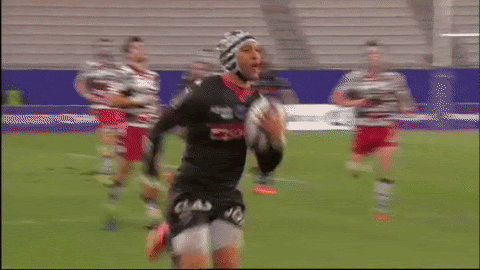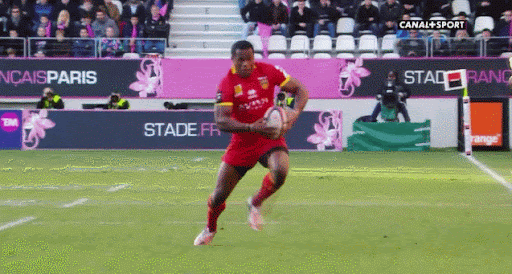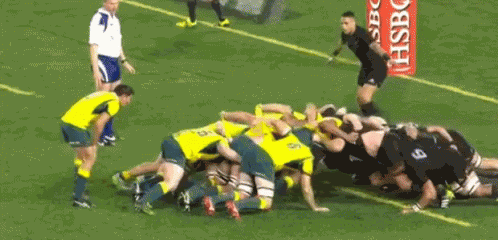Rugby can be a pretty complicated sport if you have never played it before. So let’s try to explain the game as well as covering some of the basic rules.
What is Rugby? Rugby Union is an invasion game played with 15 players on each team. There are several different ways to score points but the idea is to score as many points as possible by invading the opposing teams territory. Players are allowed to run with the ball in their hands, kick the ball in any direction and are also allowed to throw the ball, but only backwards.

Basic Rules of Rugby
The basic rule of rugby is that it is a contact sport. To make a tackle you need to grab someone from below the shoulder line and bring them down to the ground. You need to tackle your opponent to stop them from scoring points. It is a game about territory, as you are trying to stop the opposition from getting close to your try line.
The other basic rule of the game is that you cannot throw or kick the ball forward to a teammate. All passes and kicks must be backward as otherwise, the player is offside. This is also part of the rules that rugby introduced to try to differentiate from football.
How do you score in rugby?
Very simply, there are four different ways that you can score in rugby. That is either by scoring a try or kicking a penalty, conversion or drop goal. Scoring a try is the primary way that teams are trying to score because it gives that team the most points.
You can score a try by grounding the ball on or over the opposition’s try line. Grounding the ball means putting the ball on the ground with downward pressure. You cannot drop the ball on or over the try line, it must be grounded. You are awarded five points for scoring a try. It also allows you to attempt a conversion.

A conversion is taken in line from where the try was scored and if successfully kicked through the posts, it is worth two points. If the attacking team wins a penalty they have the choice to kick that penalty over the posts from where they earned the penalty. If they do then it is three points.
In open play, a player can drop the ball onto the ground and kick it. If this goes over the opposition’s post then it is three points. These are the only way to score points and so teams will attempt to get as close to the opposition try line as possible because that makes it easier to score points.
Tackling rules of rugby
The simple rule around tackling for rugby is that you’re only allowed to tackle the person who currently has the ball. You are not allowed to tackle anyone who does not have the ball. Once the player with the ball has their knees on the ground then the tackle is complete and you must release the player you have tackled.

You also can’t tackle someone using your legs, it must include a wrap of the arms around the player. You cannot tackle high on a player either. Tackles must be completed below the neckline and any contact to the head could be deemed dangerous and could lead to that player receiving a card or conceding a penalty.
Length of a rugby game
A rugby game is split into two halves. Each half is 40 minutes long. Unlike football, there Is no added time at the end of each half. Instead, the clock is stopped whenever there is a stoppage for a substitution or an injury.
If needed, there is a provision for the game to be made longer. In a knockout game, if the scores are tied after 80 minutes then extra time will be played. This is 20 minutes long, split into two halves of 10 minutes. There is no further time after this, with the game being decided by who scored more tries or by a penalty kick shootout.
The size of a rugby pitch
Rugby pitches are incredibly large, both wide and long. A rugby pitch has certain measurements. The distance from one try line to another try line cannot exceed 100 metres, with the majority of pitches being around 100 metres long. They also are usually around 70 metres wide.
The goal line area cannot be longer than 22 metres and the exact area of the in-goal area really varies massively depending on the club’s choice. Each half of the rugby pitch also includes a 22-metre line as well as a 10-metre line. The 22-metre line is 22 metres away from the goal line, while the 10-metre line is 10 metres away from the halfway line
The goalposts that sit on the try line need to be central and exactly opposite each other. The distance between the goalposts is 5.6 metres while the minimum height for the crossbar is 3.4 metres tall.
Rugby set pieces
There are two main set pieces in rugby, the scrum and the lineout.
A scrum occurs when either team knocks the ball forwards or a forward pass is thrown. A scrum is where all eight forwards from both teams drive against each other. The ball gets put into the middle of the scrum by the scrum half and is supposed to be hooked back in the scrum by the hooker.

Teams can win penalties at the scrum if the opposition stands up and prevents the scrum from continuing to push. It can also be used as an attacking weapon, with lots of space available around the pitch when a scrum occurs.
The other set piece is called a lineout. A lineout occurs when the ball goes out of play across the touchline. Possession of the ball changes when the ball goes out of play and so the team who did not have the ball going into touch gets to throw into the lineout. The players line up in a straight line and usually lift someone up to catch the ball from the player throwing it.
